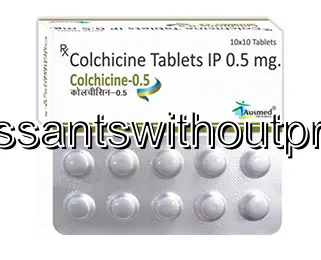Shop Autumn Crocus (Colchicum Autumnale) Online UK
| Package | Dosage | Price | Price per Dose | |
|---|---|---|---|---|
| Dosage: 0,5mg | ||||
| 270 pill | 0,5mg | £191.72 | £0.71 | |
| 360 pill | 0,5mg | £186.98 | £0.52 | |
| 180 pill | 0,5mg | £162.13 | £0.90 | |
| 120 pill | 0,5mg | £142.01 | £1.18 | |
| 90 pill | 0,5mg | £121.89 | £1.35 | |
| 60 pill | 0,5mg | £94.67 | £1.57 | |

Autumn Crocus Description
Overview of Autumn Crocus
Autumn Crocus, known scientifically as colchicum autumnale, is a perennial flowering plant that blooms in late summer to fall. Native to parts of Europe and Asia, it is often admired for its striking purple flowers and ornamental appeal. However, beyond its beauty, Autumn Crocus holds medicinal significance due to its potent alkaloids. It is important to note that the plant is highly toxic if not used correctly, and its derivatives require careful handling.
Pharmacological Properties
The primary active compounds found in Autumn Crocus are colchicine and related alkaloids. Colchicine is well-known for its ability to interfere with cell division, particularly by inhibiting microtubule formation. This makes it useful in the treatment of certain medical conditions, such as gout, where it helps reduce inflammation caused by uric acid crystals. The drug’s mechanism involves decreasing leukocyte migration and phagocytosis, thus alleviating pain and swelling during gout attacks.
Clinical Uses and Effectiveness
In medical practice, colchicine extracted from Autumn Crocus is used primarily for managing acute gout flares and preventing future attacks. It is also employed in certain inherited conditions, like familial Mediterranean fever, to reduce inflammation. When administered in proper doses, colchicine can be very effective. However, its narrow therapeutic window necessitates precise dosing and monitoring to avoid toxicity.
Safety and Precautions
Despite its therapeutic benefits, Autumn Crocus contains potent toxins that can cause severe poisoning if misused. Overdose may lead to gastrointestinal symptoms such as nausea, vomiting, and diarrhea, and in extreme cases, bone marrow suppression, organ failure, or death. Therefore, colchicine derived from Autumn Crocus should only be used under strict medical supervision. Patients with kidney or liver impairment, and those on other medications, should exercise extra caution. It is crucial to adhere strictly to prescribed doses and avoid self-medication.
Potential Side Effects
Common side effects of colchicine therapy include gastrointestinal disturbances like abdominal pain, diarrhea, and nausea. More serious adverse effects involve muscle weakness, hair loss, and blood abnormalities such as leukopenia. Long-term or excessive use can lead to toxicity affecting multiple organ systems. Prompt medical attention is essential if signs of poisoning appear. Regular blood tests may be required to monitor for hematological abnormalities during treatment.
Storage and Handling
Medications containing colchicine should be stored in a cool, dry place, away from children and pets. Proper handling is important to prevent accidental ingestion. Healthcare providers typically prepare controlled doses, and patients are advised to follow exact instructions. Since the plant itself is toxic, it is recommended to avoid any contact with raw Autumn Crocus bulbs unless prepared and prescribed by a healthcare professional.
Conclusion
Autumn Crocus is a plant with significant medicinal potential primarily due to its colchicine content. When used appropriately, it offers effective relief for specific inflammatory conditions. Nonetheless, its toxicity demands cautious use, careful dosing, and medical supervision. The therapeutic benefits outweigh the risks only when managed carefully, ensuring patient safety and treatment efficacy. Always consult healthcare professionals before considering medication derived from Autumn Crocus, and never attempt self-treatment with raw plant material.